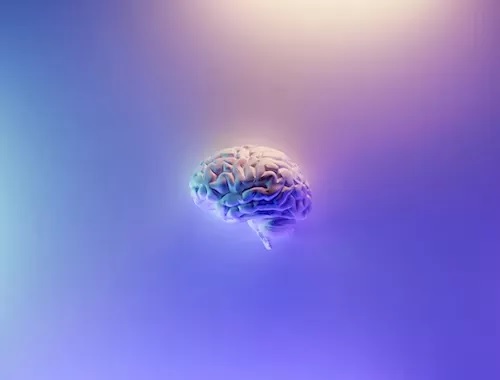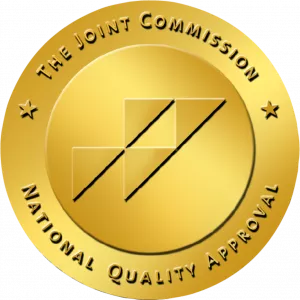Addiction is tough. Breaking the cycle of addiction is even tougher. At first, the addictive substance is pleasurable and can relieve a person of stress, anxiety, and/or other unpleasant emotions. Once a person is addicted to the substance, though, they no longer have control over their mind or impulses. With time, they may want to stop engaging with the addictive substance. There are several reasons why a person struggling with an addiction may want to start breaking the cycle of addiction:
- They have started feeling the unpleasant side effects of prolonged substance misuse
- Purchasing the substances costs too much money, and they can no longer afford it
- Their loved ones are resentful of the negative effects of addiction and are demanding change
- They do not like to be dependent on a drug that leaves them unable to function without it
- They are finding it hard to live a functional life with a stable job and meaningful relationships
The problem is however, that once a person has a substance abuse disorder, it is almost impossible to get out of the addiction cycle on their own. Quitting the drugs or alcohol altogether results in unbearable withdrawal symptoms, intense cravings for the substance, and a whole host of unpleasant emotions. Even if an addict receives an ultimatum from their spouse or other family members or they have an enormous amount of willpower, the reality is that the brain has changed. The desire for the substance takes over everything else in the world. People who try to put a stop to their addiction problem will usually go through the agonizing addiction cycle, which not only doesn’t solve the problem but may actually make the addiction worse.
Before Breaking the Cycle of Addiction, Let’s Understand How Brain Activity Changes with Addiction?

Dopamine is a hormone that is released from the brain that makes us feel pleasure. This hormone is released when we do everyday activities such as eating food we enjoy, spending time with people we love, and doing physical exercise. Drugs and alcohol are substances that cause the brain to release dopamine artificially, causing the brain to crave more. While it’s true that the instant result of consuming drugs or alcohol is pleasant, relaxing, numbing, calming, relieving and other pleasant emotions, as soon as the effects of the substance wear off all the regular emotions come flooding back. The person may now feel emptiness, pain, sadness, guilt, fear and other negative feelings.
Drugs or alcohol is an easy way to get rapid relief from complex issues and emotions, but it does not deal with the root issue. It may be the easy way out in the moment, but in the long run it only creates a much bigger issue that is difficult to escape from, which is addiction. The good news is that as soon as a person decides that they want to get out of the addiction cycle for good, it is achievable with a supportive framework of therapists, family, friends, and other support systems.
What is the Cycle of Addiction?
Here is a basic guideline for the cycle of addiction:
- Trigger
- Drug cravings
- Using the drug
- Instant gratification
- Guilt/other negative feelings
- Withdrawal symptoms
The cycle of addiction starts with a trigger. A trigger is different for every person but usually involves stress, anxiety, a reminder of a traumatic event or other emotional pain. The person struggling with addiction will then crave the substance that provides instant relief from the negative feelings. In the next stage of the cycle, the person will lose their resolve and consume the substance. After the effects of the drugs or alcohol wear off, the person will then develop feelings of guilt, remorse, shame, and dissatisfaction from being unable to show restraint. This is on top of the previous negative feelings (from the trigger) that prompted the person to indulge in the substance in the first place.
The person struggling with addiction will also experience minor withdrawal symptoms after the effect of the drug wears off, making them crave the ‘high’ from the drugs again. The addict may resolve at this point not to use the substance again, resulting in extended withdrawal symptoms that make it extremely difficult to uphold the commitment. When a trigger occurs, the cycle starts all over again.
How to Break the Cycle of Addiction
Many people struggling with drug addiction feel hopeless. They can’t fathom breaking the addiction cycle. The truth is that breaking an addiction cycle is hard. In fact, it’s almost impossible to achieve alone. With the support of family, friends, therapists, a rehab center, and other professionals, it’s possible to change the wiring of the brain. You’ll train yourself to form new habits and stop the cycle of addiction. Below we present several strategies to help get out of the addiction cycle.
1. Identify the Triggers/Core Issues
Much data has proven that different factors put people at risk of developing an addiction. This includes but is not limited to abuse, parental neglect, peer pressure, stress, limited social support, reduced self-esteem, other mental health issues like anxiety, depression or bipolar disorder, and lack of social awareness. These core issues will constantly arise as a trigger in different forms, making any move to break the cycle of addiction ineffective. The individual struggling with addiction must identify and resolve these before any further action can be taken to rid themselves of addiction.
2. Remove Harmful Environments
Often, people consume drugs in social settings with fellow addicted friends. It is extremely difficult to remain strong in a setting where others are consuming drugs freely. In fact, it would be considered a trigger that could cause a person to fall for addiction again. Ensure that you cut off ties with these people until they follow your path to healing. The same applies to other settings that may cause a trigger. For example, if work is too stressful, find yourself a different job or take time in your day to meditate and practice deep breathing. If your home or romantic relationships are unhealthy, either get out or go for counseling to help you resolve the issues you’re experiencing, thereby eliminating those triggers.
3. Surround Yourself with Supportive People
Breaking the cycle of addiction is difficult. Fellow addicts and other unhealthy people in your life may attempt to dissuade you from taking control of your life. They could try to undermine and ridicule your efforts, or worse. It is imperative to find new friends and people to spend time with if you’re serious about eliminating addiction from your life. Surround yourself with sober friends, people who love you, care for you, and want to see you succeed.
You may also choose to find a mentor or experienced coach who can support and guide you through the difficult moments and show their belief in you and your recovery. They can also help to hold you accountable for staying free of your addictive substances.
4. Change Negative Lifestyle Habits
This may involve planning a clear structure for your day, forming a plan for healthy eating, ensuring a daily regimen of exercise, and establishing a healthy sleep pattern. It also includes setting clear goals and guidelines on how to keep up the new lifestyle for the long term. You can also start practicing mindfulness using meditation, yoga, and other breathing techniques. Take up a hobby or engage in a cause you feel passionate about. These behaviors will serve as a substitute for your previous go-to solution to avoid uncomfortable emotions, promote an overall healthy sense of well-being, and help to reinforce sobriety.
5. Attend Therapy, Rehab, and Other Supportive Groups
Professionals are crucial to your recovery in every way. Therapists can identify and discuss negative triggers and emotions that are the root issues behind the addiction problem. A reputable drug rehab center can guide you through medical detox to minimize withdrawal symptoms, provide support groups and therapies, and help you achieve a drug-free life again.
Breaking the Cycle of Addiction: You Don’t Have to Do It Alone
If you struggle with drug addiction and cannot find it tough to break the cycle of addiction, know that all hope is not lost. With determination, grit, and a supportive network of family, friends, and professionals, you can and will start your path to recovery! The cycle may feel endless, but it only lasts as long as you allow it to.
Avenues Recovery are experts in addiction rehabilitation. With multiple locations around the US, and professional, experienced staff who have traveled their own sobriety journeys, we bring addicts a support network parallel to none. Contact us today to hear more about the multiple detox and treatment programs we offer. You deserve better than a life of addiction!


